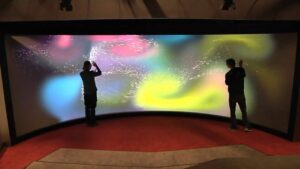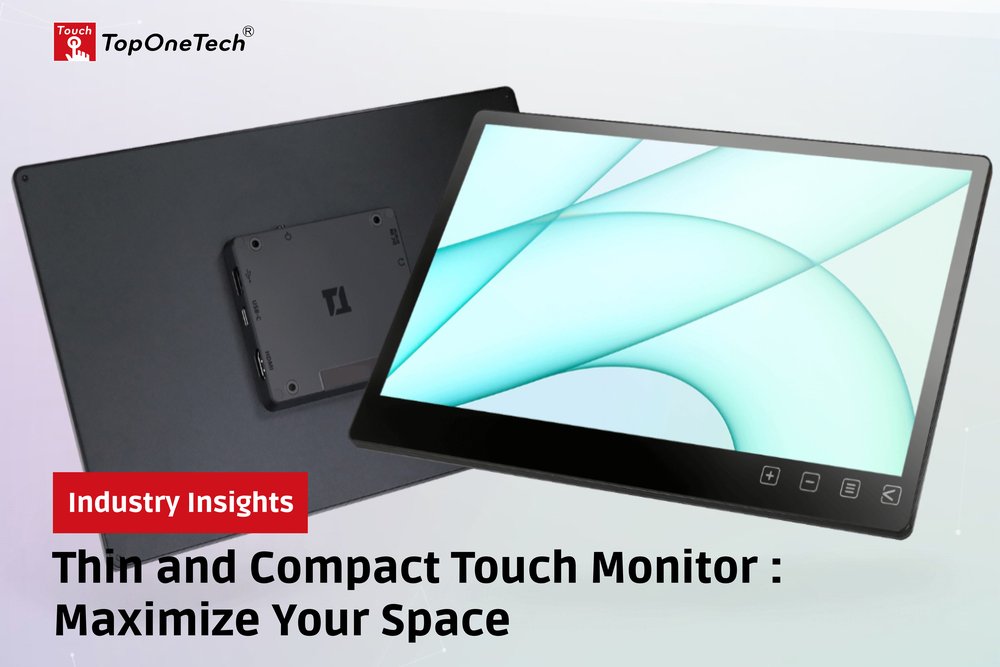
Maximum Touch Screen Size: Exploring Limits – A large touchscreen display generally refers to one whose size is over 32 inches. On the market, the average size of large interactive touchscreen displays ranges from 42 to 85 inches. Large touch screens find most of their applications in meetings, exhibitions, education, advertisements, mapping, etc. They are commonly mounted on a wall or special stand.
Maximum Touch Screen Size – Types Of Touch Screen
The maximum touch screen size is generally related to production technology. There are mainly four types of touch screens based on four typical technologies: infrared touch screens, resistive touch screens, surface acoustic wave touch screens, and projected capacitive touch screens. Each of them varies in its maximum size.
Maximum Touch Screen Size – Infrared Touch Screen
Infrared touch screens can achieve considerable size, with maximum sizes exceeding 150 inches. However, shrinking them isn’t viable since small-sized touch screens cost as much as capacitive ones and offer inferior user experiences. At present, they can basically meet the large-size requirements of touch screens on the market. Surrounding lights easily interfere with infrared touch panels, resulting in poor performance in direct sunlight as sun rays disrupt the infrared light beams. We suggest placing the infrared touch panel device in a dark location. So the infrared touch screen is not ideal for an extra large touch screen that demands high light interference capability.
Projected Capacitive Touch Screen
Projected capacitive touch panels (PCAP touch screens) exhibit high precision and high-speed response times, earning them renown. Due to the widespread use of Indium Tin Oxide (ITO) technology, projected capacitive touch screens typically cannot exceed 65 inches, failing to meet super-large size requirements.
PCAP gained popularity with the adoption of ITO, a cheaper and transparent conductive material, replacing the original, costlier Antimony Tin Oxide (ATO). However, ITO material features relatively high resistivity, which makes it an obstacle to constructing a larger-format sensor. It is because of that as touch sensors’ sizes increase, their electrode length increases as well. As a result, it causes higher resistance, leading to a higher time constant, which causes a slower response. Within a suitable size range, the PCAP touch screen excels in multi-touch functionality, providing sensitive response in a lightweight and thin structure.
Resistive Touch Screen
Resistive touch panels detect commands by pressure placed on the screen. Generally, they have limitations to single-point touch. The resistive touch screens generally do not exceed 22 inches. Surface acoustic wave touch screens offer large size and high durability, but currently, their sizes typically do not exceed 42 inches.
When designing the size of the touch display, consider not only technical constraints but also usage and application scenarios. Will it be used for art exhibitions, classrooms, outdoor advertising, or industrial monitoring? Where interactive touch displays will be installed and who will use them greatly determines their size. To specify, consider the installation location, height, number of users, and user demographics (kids, adults, seniors, handicapped individuals).
Top One Tech specializes in designing, developing, and producing infrared touch screens and projected capacitive touch screens, mainly offering the following sizes:
Projected capacitive touch screens range from 7 to 55 inches, offering high cost, anti-scratch properties, long service life, and environmental adaptability. The infrared touch screen ranges from 10.4 to 80+ inches, featuring low-price, easy-to-install, but low resolution.
See Also : Our Wide Range Products For Your Touch Screen and Touch Monitor Needs



